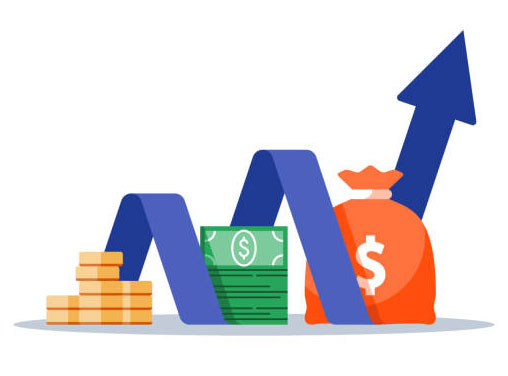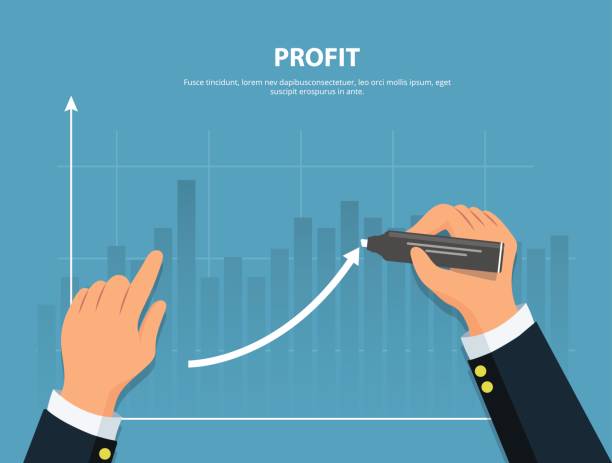The best thing about return on investments for email marketing can also be the worst thing. The average email marketing ROI is $38 for each $1 spent, according to several recent worldwide studies. This is a much higher rate than any other form of marketing available and is essential to the popularity of email marketing.
To better understand what this means let’s begin with some basics.
ROI, as defined by Investopedia, is “a performance measure used to evaluate the efficiency of an investment or compare the efficiency of a number of different investments.”
For email marketing, you should be able to measure what you have gained from your investment and what you have spent on it. The formula to measure ROI:
Gained - Spent/Spent = Return on Investment expressed as a percentage

As you invest money in email marketing initiatives, you need to know how much your emails affect your business. Essentially, is the money you spent on your email service provider, or ESP, worth the amount you are getting back from all it does for you?
As stated above, the average email marketing ROI is relatively high. How high it goes depends on you and your goals. Below we have listed the incredible benefits these high rates can have for your business as well as the related cons. As we go through them, we hope to provide some insight into how best to use your email marketing not only regarding ROI but for the overall good of your brand.
Pros:
Builds Revenue
These high rates are great because it means that email marketing seriously works to build business revenue. It works better than any other form of advertising available, other than word of mouth. While other digital marketing channels certainly have a place in business and can/will do wonders for your brand, the high ROI alone for email marketing proves that it is king.

This success is because nearly 281 billion emails are sent on a daily basis by about 3.8 billion users. And 99% of those check their email every day, some as many as 20 times. These numbers continue to grow each year, as does the amount of yearly revenue earned from email marketing. With this information, we can correctly assume that email marketing will continue to connect consumers to their favorite companies year after year.
Magnifies Brand Awareness
Consumers and businesses alike love that email marketing can be so direct in its targeting, so personal, and so great for the industry as a whole. Email campaigns enable you to reach your consumers multiple times on different levels of connections, building a relationship of trust and increasing sales conversions. As you consistently give them the information they find valuable and can use, they will become more likely to buy from you, as well as let others know about your services.
Increases Web Traffic
Email marketing can continuously drive traffic to your website, creating even more revenue. Consumers who frequently engage with your email campaigns prove that they have an interest in what you have to offer. This means they are relevant or qualified leads and are more likely to purchase from your website. As you captivate more people like this, the probability of increased revenue grows.
Improves Sales Conversions
As you connect with your consumers multiple times giving them different information with each email, as well as drive them to your website, you continue to nurture your leads towards making a purchase. It is possible they may need a slight push in the right direction or a little more information. Email campaigns allow you to give them what they want and need to make that final decision.
Cons:
However, the high success of email marketing can lead some marketers into a state of complacency. They know they are getting better returns than ever before and are thrilled about it. Therefore, they continue the same marketing strategy year after year with minimal changes.
It’s the old, “if it ain’t broke, don’t fix it,” mentality.
While this way of thinking may not hurt their business, it doesn’t lead to higher revenue in the long run.
The Goal Isn’t High ROI
Many marketers believe that the higher your ROI rate is, the more success you will have with your brand. And while this is somewhat true, high ROI rates should not be the end goal. They are just the tip of the iceberg. What successful businesses really care about are absolute returns and revenue. Moreover, studies show that as returns increase with the help of a sophisticated email marketing platform, most ROI decreases a bit.
When we look at email marketing programs and their sophistication levels, we can see this connection.
You can see that as the sophistication level and investment of their ESP increases, their ROI goes down slightly. However, revenue rose to all-time highs.
This shows that businesses with more sophisticated programs focused on maximizing overall returns instead of just paying attention to the rate of those returns. When you make money from your email marketing program, it doesn’t matter at what rate that happens just so long as it is increasing your absolute returns. The point, after all, is to drive these absolute returns higher and higher, not only your rate of ROI for email marketing.
High ROI Distracts from Email Marketing Investments
This relationship infers that the amount of absolute returns directly correlates to how much you are willing to invest in your email marketing programs. The more you put into those programs, the more likely they are to work well for you. One might think that with such a high ROI on email marketing, businesses would be willing to invest more into their programs to make them better. However, a Litmus study suggests that many companies do not.
Brands that kept their budgets the same or decreased them in regards to email marketing and the tools and training involved had an ROI of around 39-40:1 on average. In comparison, those willing to increase spending in these areas saw a small drop in ROI to about 35-36:1.
These facts are evidence of the complacency high ROI rates can bring. Instead of striving to increase revenue overall, some companies have settled for excellent ROI. To get those high absolute returns, you might have to invest a little more in your ESP, which in turn will bring your ROI down a bit. However, don’t underestimate the power of a sophisticated email platform that continuously drives business to your door.
Email Marketing ROI Measurements
Other research from the DMA shows that this lack of spending attributes to the fact that very few businesses can accurately calculate the ROI of their email marketing. Much of this is due to the lack of sophistication in the email marketing program they are using. Many applications don’t even attempt to measure this, let alone do it well.
Still, some of this may be because there seems to be a lack of urgency to do so. Businesses who use email marketing are aware that this method works for them. They are making more money and the company is growing. Therefore, they don’t feel the need to measure just how much money is directly made from their emails and monthly newsletters. So, they don’t.
Another reason for this lack of investment is that when marketers use email marketing in addition to other channels, such as social media and direct mail, there is much more pressure to measure the ROI of those methods as they do not always work as well and may be more expensive. This means they have less time and energy to put into regulating the ROI of email marketing, which they already know works well for them.
As a brand begins to understand their ROI for email marketing, they can see precisely how their emails are working for them and can adjust those results accordingly. Sophisticated email service providers, like FireDrum, measure ROI on a frequent basis and use engagement tools and reports such as Google Analytics to get precise, in-depth details about which email strategies work the best, such as when to send emails, who opens them, what information best grabs attention, and what ideas may need improvement.
Getting Better Returns from Email Marketing
Here are some simple ways to grow your returns overall:
- Start measuring your email marketing ROI. Look for ways that you can directly measure your returns, like money that is made by subscribers who click through your emails and make a purchase. Merely add the sums of these purchases by consumers who clicked on email content.
In the case that you are not able to track exact numbers yet, you can calculate the average ROI for email revenue by multiplying the number of conversions made through email by the value of an average order. This will at least give you an idea of how much revenue email is generating for you.
Then move on to returns that are measured indirectly, like the buying habits of subscribers in your stores compared to those who do not receive your emails.
Better yet, get connected with an email service provider like FireDrum that can measure this for you and teach you how it all works in simple and easy to use interactive graphs and reports.
- Strive for high absolute returns on email marketing efforts. This means you need to become more and more sophisticated. Once you start to get a high rate of ROI, don’t get comfortable. Know that more growth is possible. Get on the other side of that ROI curve by investing more in your email marketing program and making it better. Alternatively, invest in a program that works as hard as you do to maximize your efforts, increasing sales and saving you money.
- Better comprehend your email marketing metrics and what they mean. Any good program will give you a set of key performance indicators that you should understand and regulate, like FireDrum’s interactive graphs and contact engagement reports. As you learn to understand what these are and what they mean in comparison to your email marketing success or mistakes, you can better adjust your marketing strategies to be the most advantageous to your brand.
In conclusion, just because your company has a high ROI for email marketing, don’t let yourself become content. You can stand to create even higher overall returns by being willing to invest more into your email marketing program, making it more sophisticated and engaging to your subscribers. Just make sure to choose an email service provider that continually measures your ROI and has engagement tools to make sure you understand everything your emails are doing and what they could be doing.



